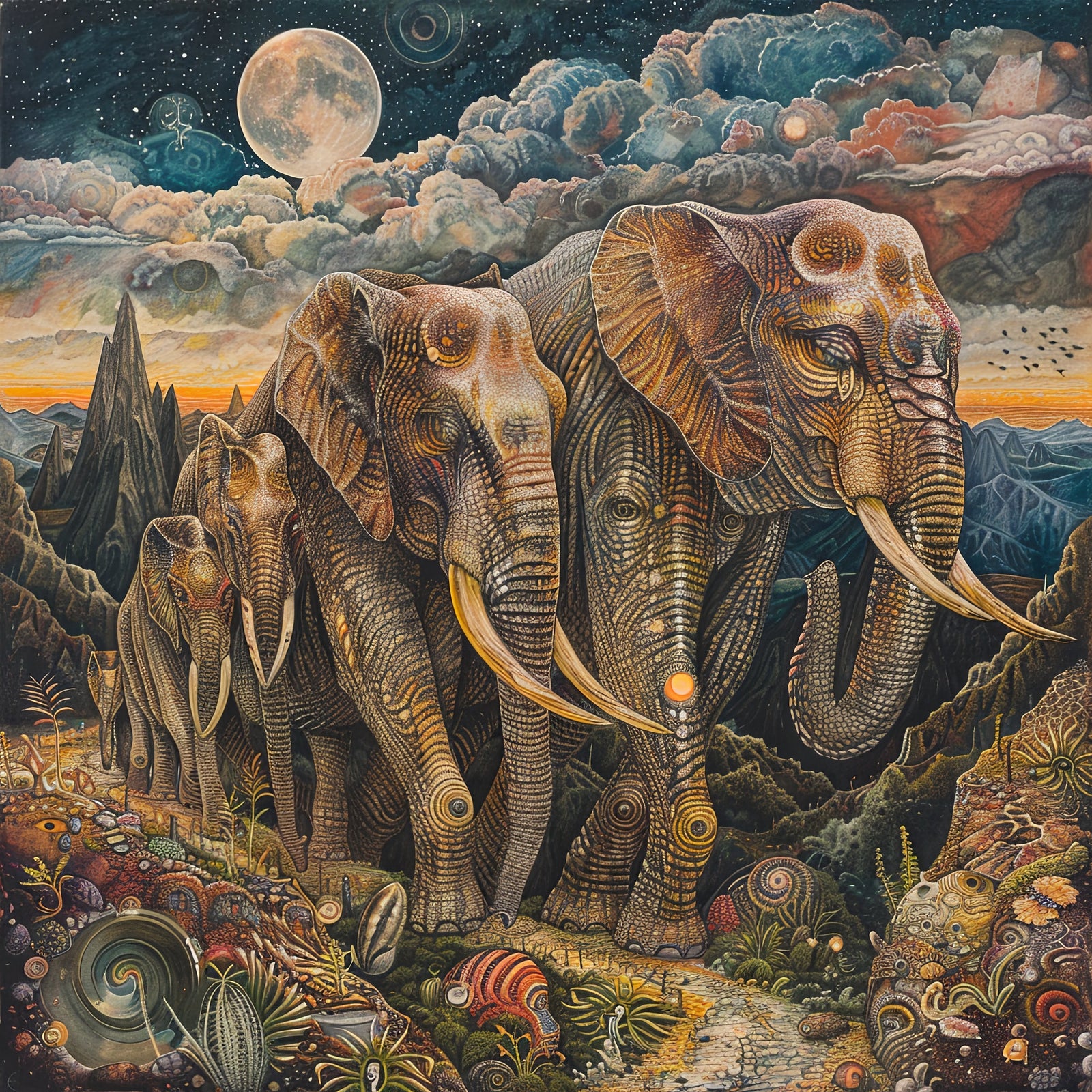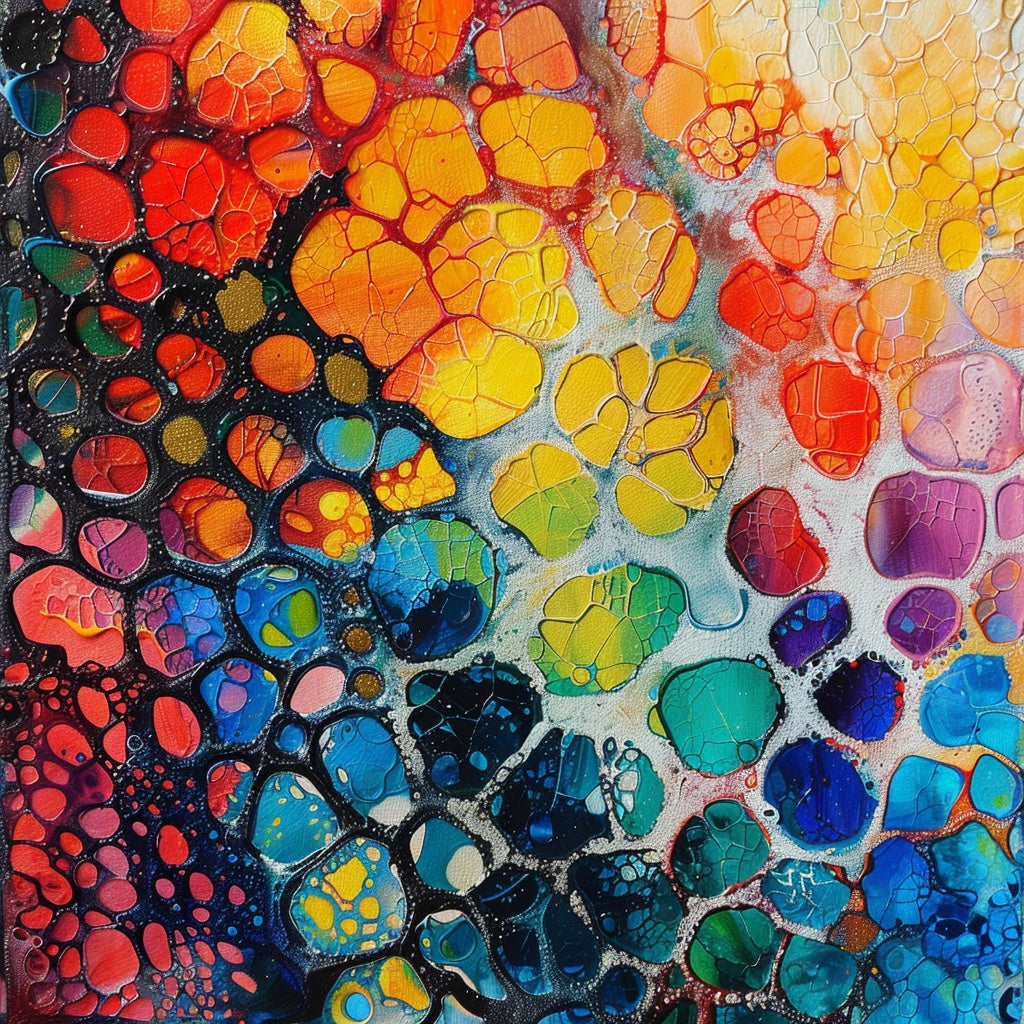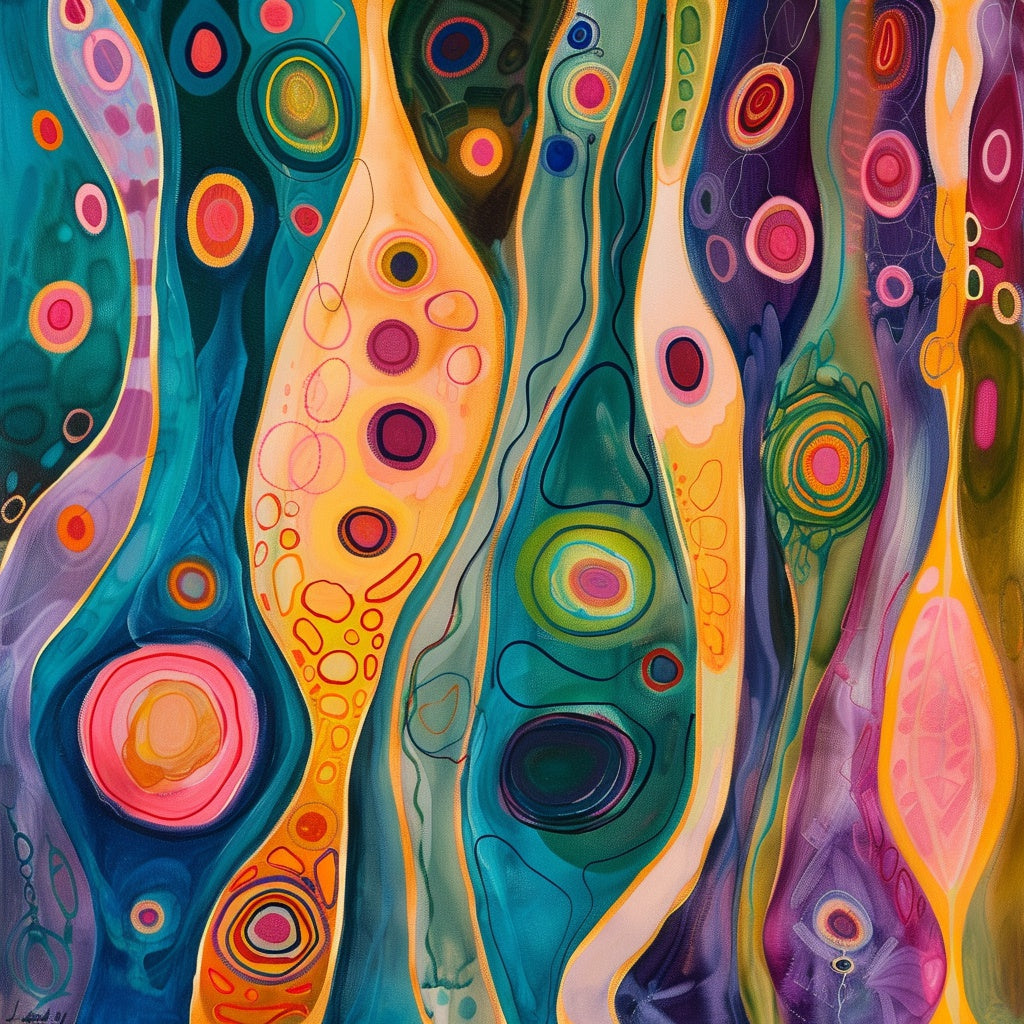AI Art and Copyright Law: Navigating the New Frontier of Creativity
The emergence of AI art generators has sparked a revolution in the creative world, allowing anyone to produce stunning visuals with just a few lines of text. However, this technological leap raises complex legal questions concerning copyright law. This article delves into the intricacies of AI art generation and copyright, exploring the challenges and potential solutions in this evolving landscape.
Table of Contents
- The Human Authorship Requirement
- Core Requirements for Copyright Protection
- International Perspectives on AI Art Copyright
- The Role of the Human User in AI Art Creation
- Fair Use and AI Training Data
The Human Authorship Requirement
Traditional copyright law is built on the principle of human authorship. This means that only works created by humans are eligible for copyright protection [1]. The U.S. Copyright Office, for instance, grants copyright solely to "original works of authorship" created by human beings [1, 2]. This is based on the idea that copyright encourages human creativity by providing creators with exclusive rights to their work [1].
AI as Author?
AI art generators challenge this fundamental principle [3]. These systems, trained on vast datasets of images and text, can produce novel artworks without direct human input [3]. This raises a critical question: can AI be considered an author under the law? Currently, the answer is no [3]. Courts and the U.S. Copyright Office have consistently held that AI systems lack the legal personhood and creative intent necessary for authorship [3].
In the case of Kashtanova v. Copyright Office, the court ruled that images generated by the AI art tool Midjourney were not copyrightable because they lacked human authorship [3]. The court emphasized that the AI system unpredictably generated images and the user's input was limited to text prompts, which did not constitute sufficient creative control [3].
This stance on AI authorship has significant implications for protecting AI-generated art. Without human authorship, AI-generated works generally fall into the public domain, meaning they are freely available for anyone to use, copy, or distribute without permission [4, 5]. This lack of legal protection raises concerns for artists and developers who invest time and resources in creating and training AI art generators [4].
Core Requirements for Copyright Protection
To understand how copyright law applies to AI-generated art, it’s crucial to examine the core requirements for copyright protection. Generally, there are three key requirements: fixation, originality, and authorship [6].
Fixation
A work must be fixed in a tangible form of expression. This means it must be recorded or embodied in a medium that allows it to be perceived, reproduced, or communicated [6]. This requirement is typically met for AI art when the generated image is saved or displayed [6]. Think of it as writing a song down on paper or recording it rather than just having it in your head. It has to be in a permanent form that others can access later [6].
Originality
A work must be an independent creation with a minimal degree of creativity [6]. It does not need to be novel or inventive, and a similar work can still be considered original as long as it was not copied [6]. However, the originality of AI-generated output is often debated [6]. For example, an AI might produce an image that looks very similar to a famous painting, but if the AI-generated it without copying, it may still meet the originality requirement [6].
Authorship
As discussed, this requirement currently poses the biggest hurdle for AI art because copyright law requires a human author [6]. Since AI is not considered a person under the law, it cannot be considered an author [3]. This means that even if an AI-generated artwork meets the fixation and originality requirements, it currently cannot receive copyright protection in the United States [3, 6].
International Perspectives on AI Art Copyright
The copyright implications of AI art generation are not limited to the United States. Countries have adopted different approaches to address this emerging technology [7-9]. Some jurisdictions have enacted legislation that grants copyright protection to computer-generated works, acknowledging the role of AI in the creative process, while others have more liberal views on AI training [7, 9].
United Kingdom
The United Kingdom, for example, grants copyright protection to computer-generated works [7]. This approach recognizes the unique nature of AI-generated content and seeks to provide legal certainty for creators [7]. This is a different approach than in the U.S. and allows for a wider range of works to be protected [7].
European Union
In the European Union, the Copyright in the Digital Single Market Directive allows for text and data mining of copyrighted works for research purposes [8]. However, it also grants copyright holders the right to opt out of the use of their works for commercial AI training [8]. This approach aims to balance the interests of copyright holders with the need to foster AI innovation [8]. This allows researchers to train AIs, but commercial AI projects need permission, and that is a key difference that could be useful to remember [8].
Asia
Countries like Singapore and Japan have adopted more liberal copyright rules regarding AI training, allowing for the commercial use of copyrighted material without permission [9]. This approach reflects a proactive stance in supporting the AI industry and promoting data-driven innovation [9]. These countries recognize the potential economic benefits of AI and have implemented copyright laws that facilitate AI development [9].
These diverse international perspectives highlight the need for global cooperation and harmonization of copyright laws to address the challenges of AI art generation [9]. Finding a balance between protecting creators' rights and fostering AI innovation is a key challenge for policymakers worldwide [3].
The Role of the Human User in AI Art Creation
While AI systems may not be considered authors in the traditional sense, the human user plays a crucial role in the creation of AI art [10]. Users provide the initial prompts, select and refine the generated outputs, and often contribute further artistic modifications [10]. This raises the question: can the human user’s contribution be sufficient to establish copyright protection for AI-generated art [10]? The Copyright Office has acknowledged that works "containing" AI-generated material may be copyrightable if they demonstrate sufficient human creativity [10].
This means that if a user creatively arranges or modifies AI-generated content, the resulting work may be eligible for copyright protection. However, the user can only claim copyright for their contributions and must disclaim any AI-generated portions of the work [10]. This is analogous to creating a collage: the artist can copyright the arrangement of elements in a collage, but they can't copyright the pre-existing magazine clippings or photographs they use unless they also own the copyright of those [10].
Prompt Engineering
crafting effective prompts is crucial in AI art generation [11]. Users must carefully select and refine their words to guide the AI system towards the desired output [11]. This involves understanding the capabilities and limitations of the AI model, experimenting with different phrasing and keywords, and iteratively refining the prompt based on the generated results [11]. This process can involve significant creative effort and be seen as a form of artistic expression [11]. It is similar to a sculptor giving careful instructions to their tools [11].
Output Selection and Refinement
AI art generators often produce multiple variations of an image based on a single prompt [12]. The user selects the output that best matches their vision and may refine it by adjusting parameters, adding details, or combining elements from different variations [12]. This selection and refinement process involves artistic judgment and creative decision-making, contributing to the final artwork [12]. It is similar to a film editor's role in choosing the best takes and editing them together to tell a story [12].
Artistic Modifications
Many users go beyond simply selecting and refining AI-generated outputs [12]. They may incorporate AI-generated elements into larger artworks, combine them with traditional art forms, or use them as a starting point for further artistic exploration [12]. This can involve significant human creativity and transform the AI-generated content into a new and original work [12]. Consider a musician who takes a sample of AI-generated music and uses it as part of their own track, and so on [12].
This collaborative approach to AI art creation, where humans and machines work together to produce new forms of expression, presents a unique challenge for copyright law [13]. Determining the extent of human creativity and the scope of copyright protection requires careful assessment of the user's contributions throughout the creative process [13].
Fair Use and AI Training Data
Another critical issue in the AI art copyright debate is the use of copyrighted works as training data for AI models [13]. AI art generators learn by analyzing vast datasets of images and text, often scraped from the internet, which may include copyrighted material [13]. This raises the question: does using copyrighted works for AI training constitute copyright infringement [13]? The legal doctrine of fair use allows for limited use of copyrighted material without permission for purposes such as criticism, commentary, news reporting, teaching, scholarship, or research [3, 14].
AI developers often argue that the use of copyrighted works for AI training falls under fair use, as it involves transformative use, where the AI system analyzes and extracts patterns from the data to create new and original works [1, 14]. However, the scope of fair use in AI training remains uncertain [14].
Transformative vs. Non-Transformative Use
To illustrate the concept of transformative use, consider the following examples:
- Transformative Use: An AI art generator analyzes a dataset of landscape paintings to learn about composition, color palettes, and brushstroke techniques. The AI system then uses this knowledge to generate new and original landscape paintings that do not directly copy any of the works in the training data [15].
- Non-Transformative Use: An AI art generator directly copies and reproduces copyrighted photographs without any significant modification or creative input from the user [15].
The distinction between transformative and non-transformative use is crucial in determining whether the use of copyrighted works for AI training falls under fair use [16]. Several lawsuits have been filed against AI companies alleging copyright infringement related to using copyrighted works for AI training [16]. These cases, such as Getty Images v. Stability AI and Authors Guild v. OpenAI, challenge the legality of using copyrighted images and text to train AI models without permission or licensing [16]. The outcomes of these lawsuits will have significant implications for the future of AI art generation and the development of AI models [11, 16].
Furthermore, the massive scale of datasets used for AI training raises unique challenges for applying traditional fair use principles [17]. These datasets often contain billions of images and text excerpts, making it difficult to assess the amount and substantiality of copyrighted material used [17]. This unprecedented scale of data use may require new legal frameworks or licensing models to address the unique characteristics of AI training [17].
Major tech companies involved in AI development have implemented various policies to address copyright concerns [17]. For example, Google requires attribution for AI-generated content and has restricted downloading full-resolution images [17]. Microsoft asks users to credit original sources and avoid breaking laws with AI content, while OpenAI mandates giving credit to source material for AI outputs [17]. These policies reflect a growing awareness of copyright issues and a proactive approach to mitigating potential infringement [17].
Potential Solutions and Future Directions
The legal landscape surrounding AI art generation is still in its early stages, with many uncertainties and challenges ahead [18]. However, several potential solutions and future directions are emerging [18]:
- Clarifying Copyright Law: Amending copyright law to explicitly address AI-generated works could provide much-needed clarity and legal certainty [18]. This could involve creating a new category of copyright protection for AI-generated works or expanding the definition of authorship to include AI systems under certain conditions [18].
- Licensing and Collective Management: Establishing licensing mechanisms for the use of copyrighted works in AI training could ensure that creators are fairly compensated for their contributions [18]. Collective management organizations could play a role in facilitating these licensing agreements and distributing royalties to copyright holders [18].
- Embracing Technological Solutions: Technological solutions, such as watermarking and blockchain technology, could help track the use of copyrighted works in AI training and ensure that creators are properly attributed and compensated [18].
Conclusion
AI art generation presents a fascinating and complex challenge for copyright law [19]. As AI technology continues to evolve, it is crucial to adapt legal frameworks to protect the rights of creators while fostering innovation and artistic expression [19]. By embracing a collaborative and forward-looking approach, we can navigate this new frontier of creativity and ensure that AI art flourishes within a fair and ethical legal landscape [19].
The emergence of AI art generation has profound implications for the future of art and creativity [20]. While concerns about copyright infringement and the potential displacement of human artists are valid, it's essential to recognize the transformative potential of this technology [20]. AI art generators can democratize art creation, empower new forms of artistic expression, and inspire collaborations between humans and machines [20]. The evolving relationship between technology and art raises fundamental questions about the nature of creativity and human artists' role in the AI age [20]. As AI systems become more sophisticated, it's crucial to foster a dialogue between artists, developers, and policymakers to ensure that AI art is used in a way that enriches and expands the artistic landscape [20]. By embracing the possibilities while addressing the challenges, we can navigate this new frontier of creativity and unlock the full potential of AI art [20].
Footnotes
[2] Copyright law of the United States - Wikipedia, accessed January 30, 2025
[5] What Visual and Graphic Artists Should Know about Copyright, accessed January 30, 2025
[1] Can You Copyright AI Art: Legal Insights | ScoreDetect Blog, accessed January 30, 2025
[3] Artificial Intelligence Impacts on Copyright Law | RAND, accessed January 30, 2025
[6] AI and Copyright Law in 2023: Federal Government Activities, accessed January 30, 2025
[21] Generative Artificial Intelligence and Copyright Law - CRS Reports, accessed January 30, 2025
[22] What Is an "Author"?-Copyright Authorship of AI Art Through a ..., accessed January 30, 2025
[4] Copyright law for artists: rules to protect and avoid copyright infringement of original art, accessed January 30, 2025
[7] Are You Using Generative-AI Art and Images? And How Does That Impact Your Copyrights?, accessed January 30, 2025
[8] Ask the Expert: What are legal issues surrounding AI, its impact on ..., accessed January 30, 2025
[9] AI Training and Copyright Infringement: Solutions from Asia ..., accessed January 30, 2025
[10] AI and Copyright Law: What We Know | Built In, accessed January 30, 2025
[11] 6 AI Cases And What They Mean For Copyright Law - Crowell & Moring LLP, accessed January 30, 2025
[12] Case Tracker: Artificial Intelligence, Copyrights and Class Actions | BakerHostetler, accessed January 30, 2025
[13] Generative AI Is a Crisis for Copyright Law - Issues in Science and Technology, accessed January 30, 2025
[14] 5 Key AI Legal Challenges In The Era Of Generative AI, accessed January 30, 2025
keep_pinSave to note copy_all thumb_up thumb_down


Leave a comment (all fields required)